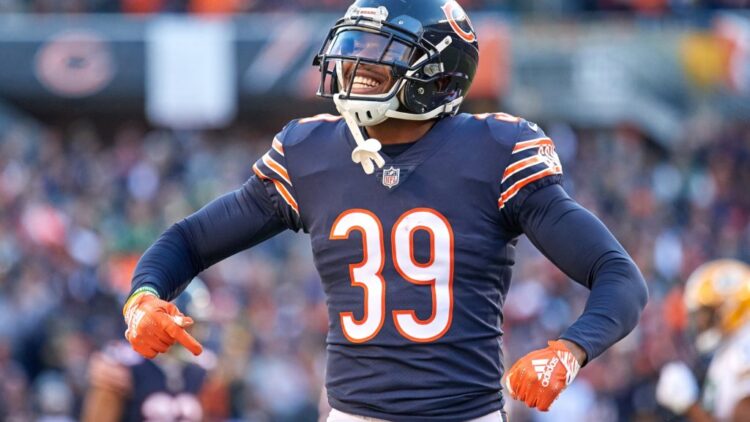
The Bears defense is alive and well. Akiem Hicks is back and disrupting plays with 13 QB hits and 5 tackles for loss, Khalil Mack has 5.5 sacks on the season, Eddie Jackson is one of the best safeties in the league, and Kyle Fuller is allowing just a 51.5% completion percent. To have a truly elite defense, you need to have a secondary and front that work together. The Bears like to move their secondary players around at the snap to force quarterbacks to diagnose things on the fly and adjust in real time. It can cause them to make poor decisions or hold the ball for a half second longer to allow the Bears pass rush to get home. It sounds simple but being static can often be a death sentence for defenses. If you don’t give teams something to think about at the snap, you’re conceding that it’s going to be your guys versus theirs. Moving your pieces around gives the advantage back to the defenses and is part of the reason why Chicago has allowed just 58.7% of passes to be completed this season.
Note: If you prefer to watch a video breakdown, scroll to the bottom of this article.

The Bears defense is predominantly a one high safety defense and play a lot of Cover 3 and Cover 1. They’ll often show two high safeties though because they want to force quarterbacks to process and figure out what’s going on post-snap. At the snap of the ball or leading up to the snap, they’ll rotate their safeties to change their pre-snap look. Often, this leads them to running Cover 1 Robber. Cover 1 just means that there is one high safety and man coverage everywhere else on the field. Robber is describing the action of the other safety because he is going to drop down at the snap and “rob” the middle of the field. This Robber player is free to jump any routes that flash in front of him. Cover 1 Robber can be used to prevent slants, quick hitting hooks underneath, or crossing routes. Here, the Giants are running a common play which is a chains concept where the receivers get to the first down marker and turn around for the ball. The Bears are running their Cover 1 Robber to the trips side so that they can help Roquan Smith in coverage. Smith knows that there’s a robber behind him so he can now bracket to the inside of the tight end. The corner to the top of the screen also knows he can play with outside leverage and funnel inside because the Robber will be there to pick up any crossers. The Robber frees up other players to play with more conservative leverage and funnel things inside to both the free safety over the top and the robber over the middle. Daniel Jones here is reading that Roquan smith is way inside on his tight end, so he’s determining pre-snap that’s the route that he wants. The tight end is going to turn around right at the sticks and with two safeties over the top and with leverage on the linebacker, it should be an easy completion. What Jones doesn’t see though, is Eddie Jackson dropping down to rob the route. Jackson knows the routes are coming based on down and distance and keys off of Jones’ eyes. He breaks on the route and causes the ball to pop up into the air.
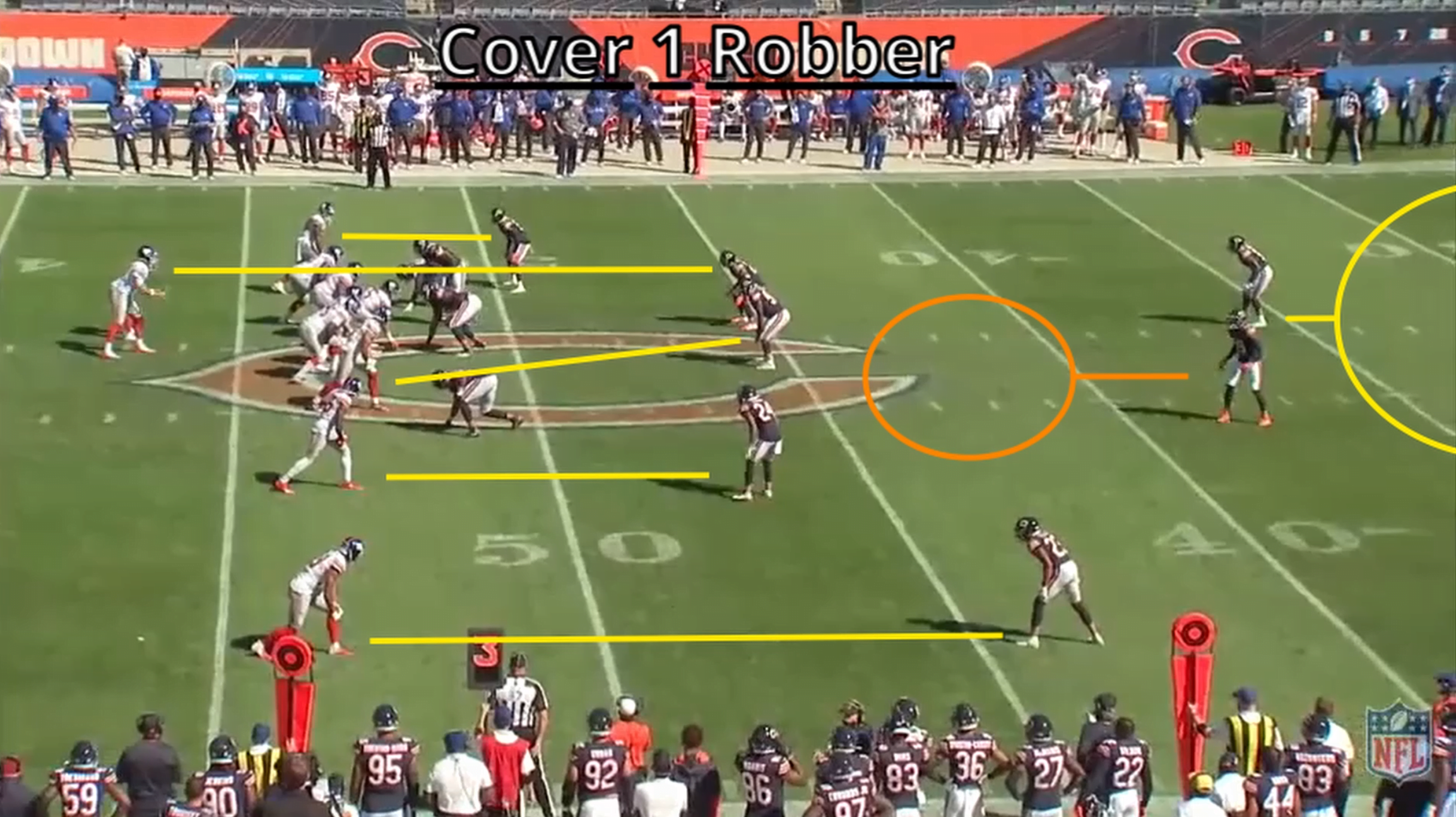

You can see in this play how Cover 1 Robber looks when coming down on a crossing route. The Bears defense shows two high before the late rotate back to centerfield by Tashaun Gipson and the Robber, Eddie Jackson, sits right in the middle of the field waiting for a an in-breaking route to rob. The Lions are running a dig route across the middle of the field and Eddie Jackson is sitting in the deep hole ready to break on it. Stafford doesn’t see it, and Jackson is able to break on it and pop the ball into the air again for an interception.
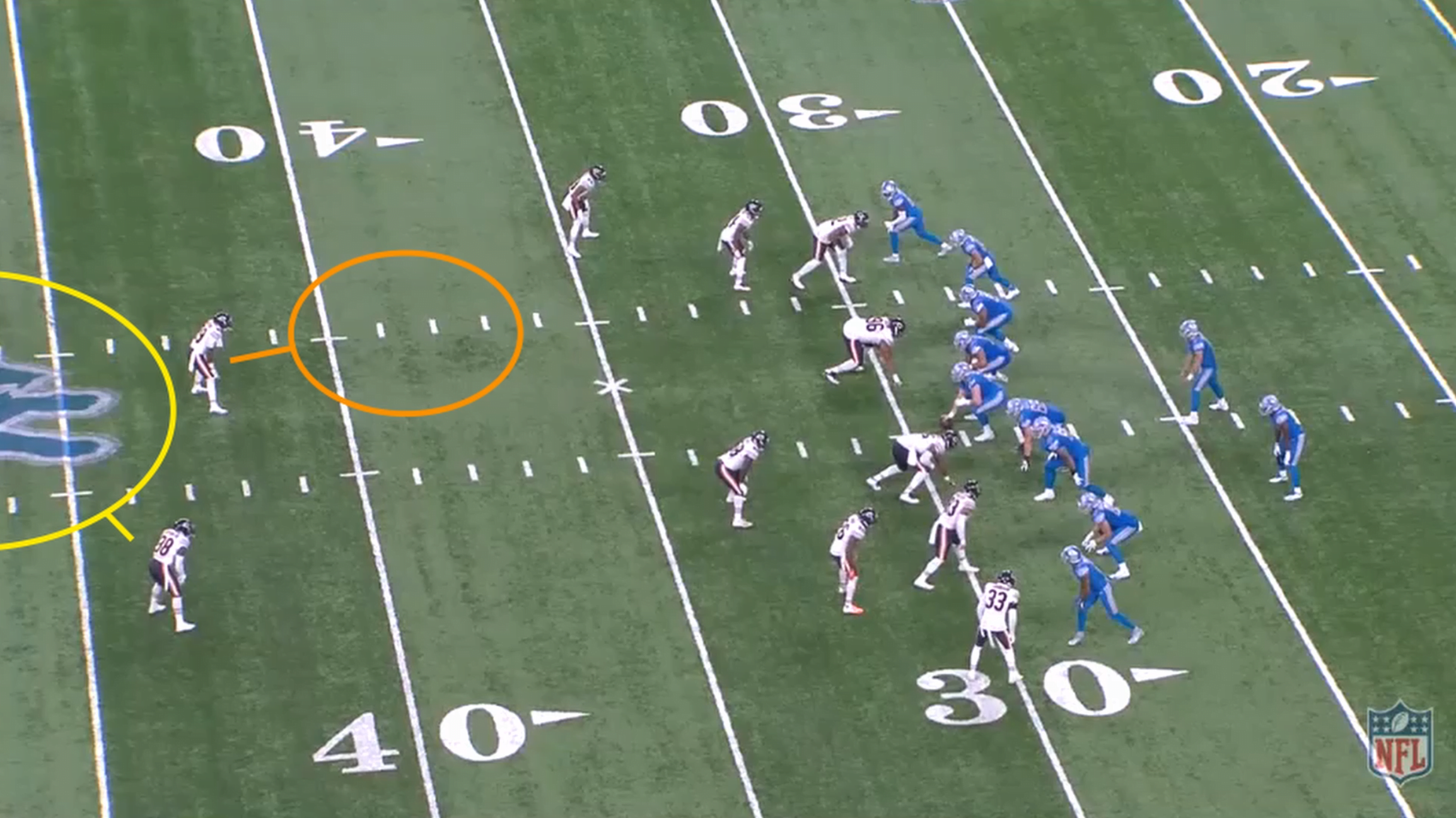

Really this robber look is just designed to cause hesitation on routes in the middle of the field, set the safety up with angles to make a play on the ball, or force the offense to make throws outside where the Bears are getting great play out of their corners Kyle Fuller and their rookie Jaylon Johnson.
For example, here the Falcons use pre-snap motion to try and diagnose what the Bears defense is doing. When the receiver shifts over and the corner comes with him, that’s a man coverage indicator. You pair that with two high safeties, and you expect to see 2 Man Under which gives the defense two deep players in each half of the field and man coverage underneath. So, if you’re Matt Ryan, what’s a route that you love here? The Falcons are running two crossers behind each other across the field. Based on leverage and having a shallow drag route to the top of the screen, he’s going to want to hit the first crosser because that receiver has inside leverage on the slot defender. The shallow by the tight end at the top will pull the defender to that side, and he sees the boundary side safety getting depth on the snap. What he doesn’t expect is for Eddie Jackson to again be in that Robber look coming down from the four-receiver side. Jackson comes down right in front of that crosser which is where Ryan is looking first. Ryan sees that the crosser is bracketed but by that time is feeling pressure. He has to come off the read, and throws short for an incompletion.

Similar to Cover 1 Robber, the Bears defense also uses jump calls against teams that like to run a lot of crossers like the Rams in Week 7. The Rams run a ton of tight formations and drag their receivers across on deep over routes in their play-action game. The Bears’ method of combatting that was to use Jump calls. A Jump call is very similar to using a Robber, but it takes a little more communication and understanding from the defense. With a Jump call, the safety is coming down on the crossing route and the corner that was initially over that route replaces them in the middle of the field instead of chasing them across. The Bears use this coverage on the single receiver side of the formation so that that corner isn’t going to be immediately threatened in their half of the field when they vacate it. For the purposes of this play, the slice behind the formation by the receiver in the slot turns this into a single receiver side to the bottom of the screen after the snap of the ball. This Jump call allows the Bears to keep the integrity of their defense and bypass traffic in the middle of the field while picking up crossers from the safety position with an angle to make the tackle or a play on the ball.
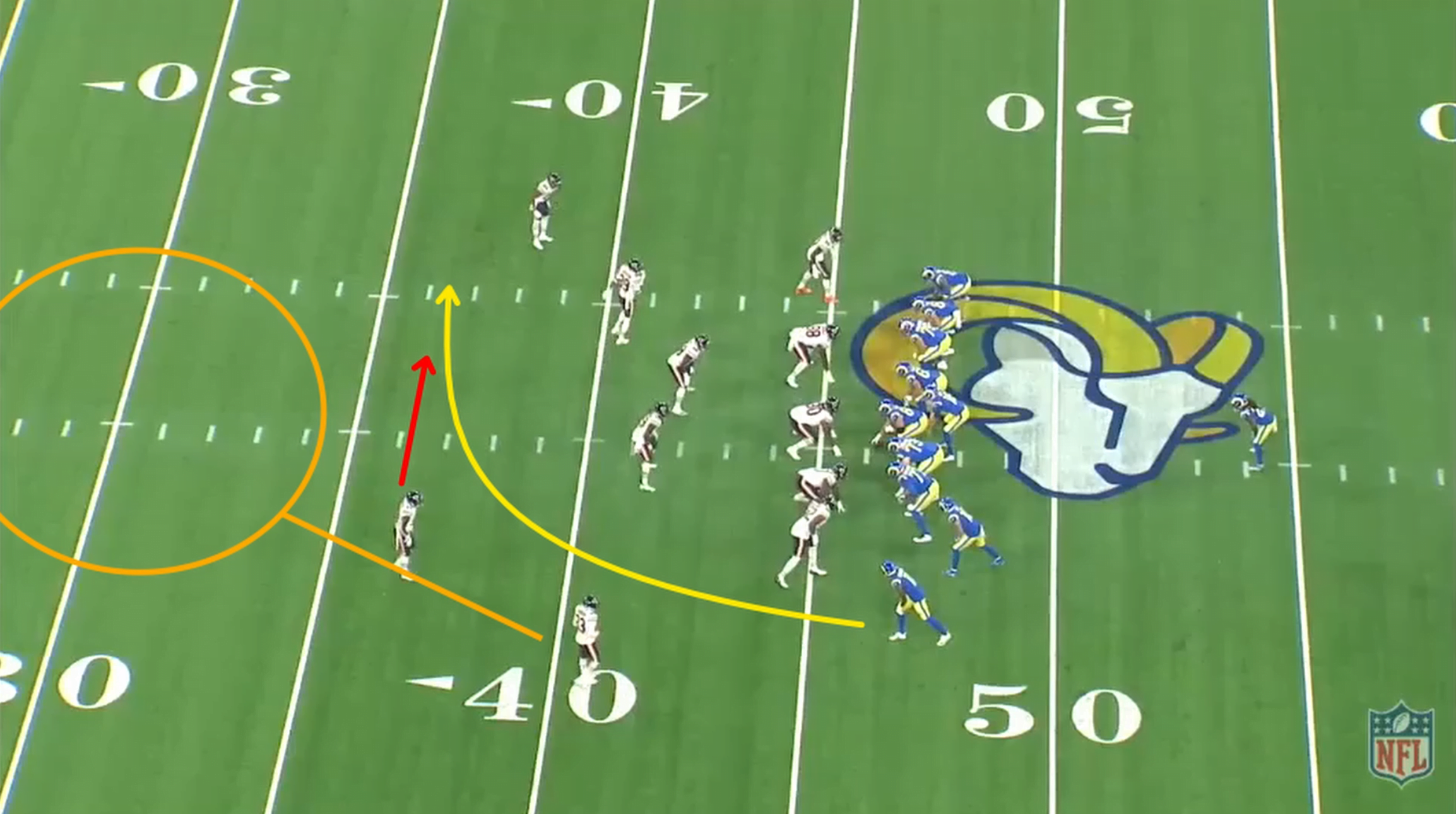

So, the Bears run a lot of the Cover 1 Robber, typically with the Robber coming from the trips side and they’ll also use those Jump calls. They’ll also invert that and show a one-high safety look and then bail out of it into Cover 2 Trap, also called Palms. Palms is popular against spread formations and two receiver sets which is what we have here against the Panthers. It’s essentially Cover 2 with match coverage principles tied into it. The corners on the outside are keying the #2 receivers on the inside. If they have an outbreaking route, they’re going to carry the #1 until they see it and then drop to jump the out route by #2. If that’s the case, the safety over the top would then pick up #1 as they go vertical. The linebackers then help to bracket any in breaking crossers like a dig or slant.
That’s what the Bears are running here. The problem that Teddy Bridgewater and the Panthers have is that Chicago is showing single high which either means Cover 1 or Cover 3. In either case, Teddy likes the matchups and leverage of his routes to the top of the screen. The #1 goes vertical, the #2 runs a wheel right behind it, and the running back runs an arrow out into the flats. In the Bears Palms coverage, the corner is going to pass off that vertical to the safety coming over the top and jump the outbreaking route from the #2. He then carries that wheel up the sideline since he is now in man coverage on that route. The slot defender is bracketing but has no in breakers, so he runs with the running back to the flats. Everything is covered. Normally, though, in a Cover 3 or in man, that initial vertical would pull the corner deep. The #2 running the wheel route would be carried by the slot defender who would normally have the flats in cover 3 and now there would be no flat defender to pick up that running back since that defender carried the wheel. In Cover 1, you’d be one-on-one with your running back on a linebacker in man. All matchups you’d probably like. So, Teddy looks that way off the snap but then sees the Bears defense is rotating into that Cover 2 look with two high safeties and the safety getting over the top of the vertical from #1. He knows that that side of the field is going to be covered and tries to get back over to the bottom of the screen. By then, though, the corner has broken on the slant from Robby Anderson, Teddy has to move out of the pocket, and the Bears close in for a sack. It’s the perfect marriage of coverage and pressure and is what makes these rotates and post-snap movements so effective for defenses. One second of pause from the QB and all the sudden your pass rush can get home for a big play to put the Panthers on their own one yard line.
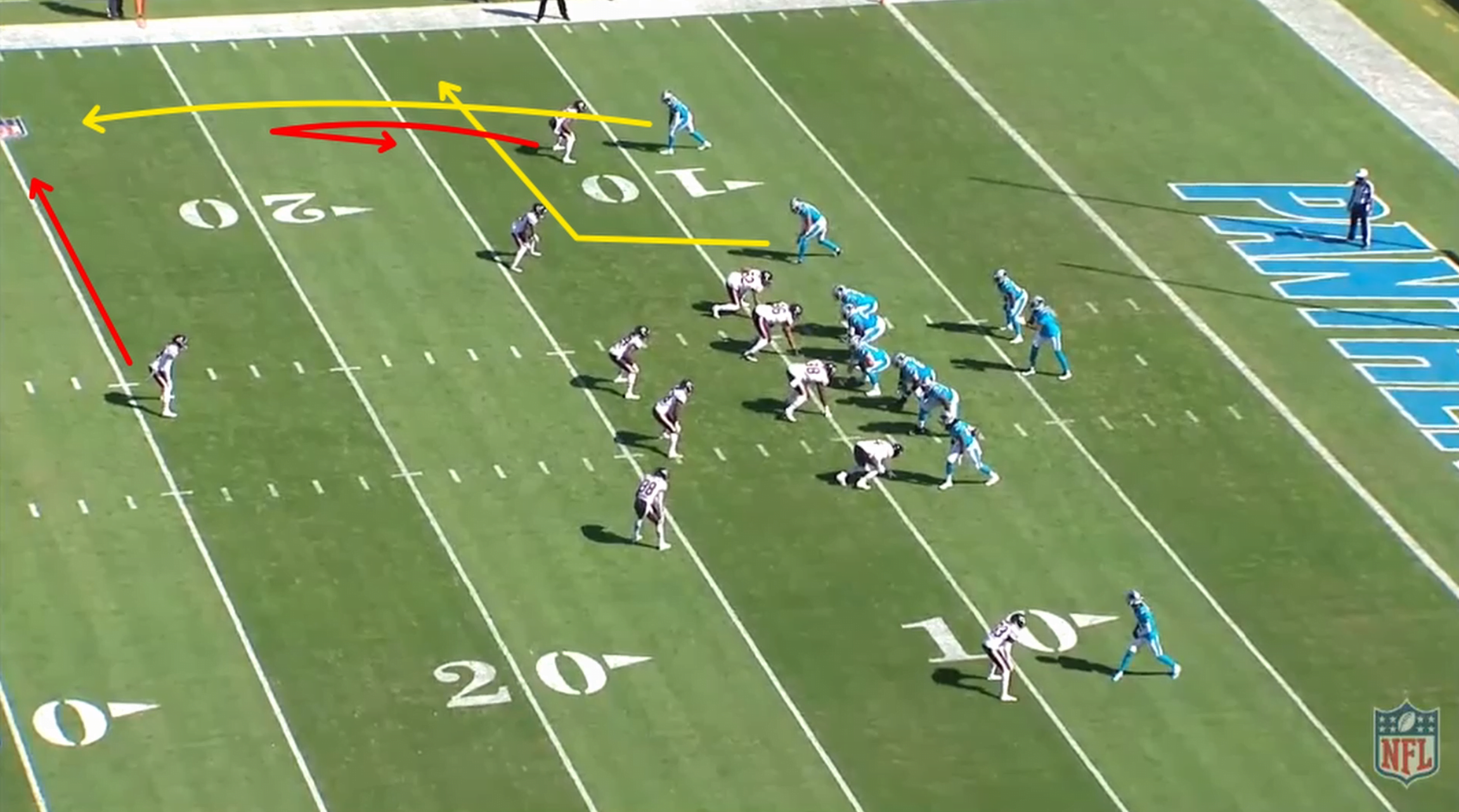

Here’s another example of Cover 2 at the bottom of the screen with the Bears again giving a late rotate into the two high safety look. The corner is again keying the #2 receiver for an out-breaking route and leaving any crosser or vertical route for the safety or the linebacker. The corner takes the quick out and the linebacker now brackets and gets inside of the post from the #1. Bridgewater knows the Bears like to have their robber to the trips side and the Bears had run a single high look with man coverage earlier in this game against the Panthers’ empty formations so that’s exactly what Bridgewater is looking for here.
The Bears instead rotate the middle field safety over and drop Eddie Jackson into the deep seem to the trips side. Normally, offenses will have reads versus defenses when they’re showing middle of the field open with two high safeties versus middle of the field closed versus one high safety. In this case, DJ Moore has an option route of running a dig versus 1 high or a post versus a 2-high look. You want to attack the weakness of the defense. Because of the strong rush and the late rotate, Teddy still thinks it’s a 1 high look and either man or Cover 3 so he’s expecting a dig from DJ Moore. Meanwhile, Moore is seeing the rotate by the safety and breaks for a post to exploit that vacated middle of the field – which really is wide open if Teddy throws the ball down the field. There’s absolutely nobody there. But because he doesn’t see the rotate and the rush is getting home, he throws the dig right into the linebacker who has bracketed the in-breaking route. It’s an interception that ultimately seals the game and prevents the Panthers from continuing their potential game tying drive.
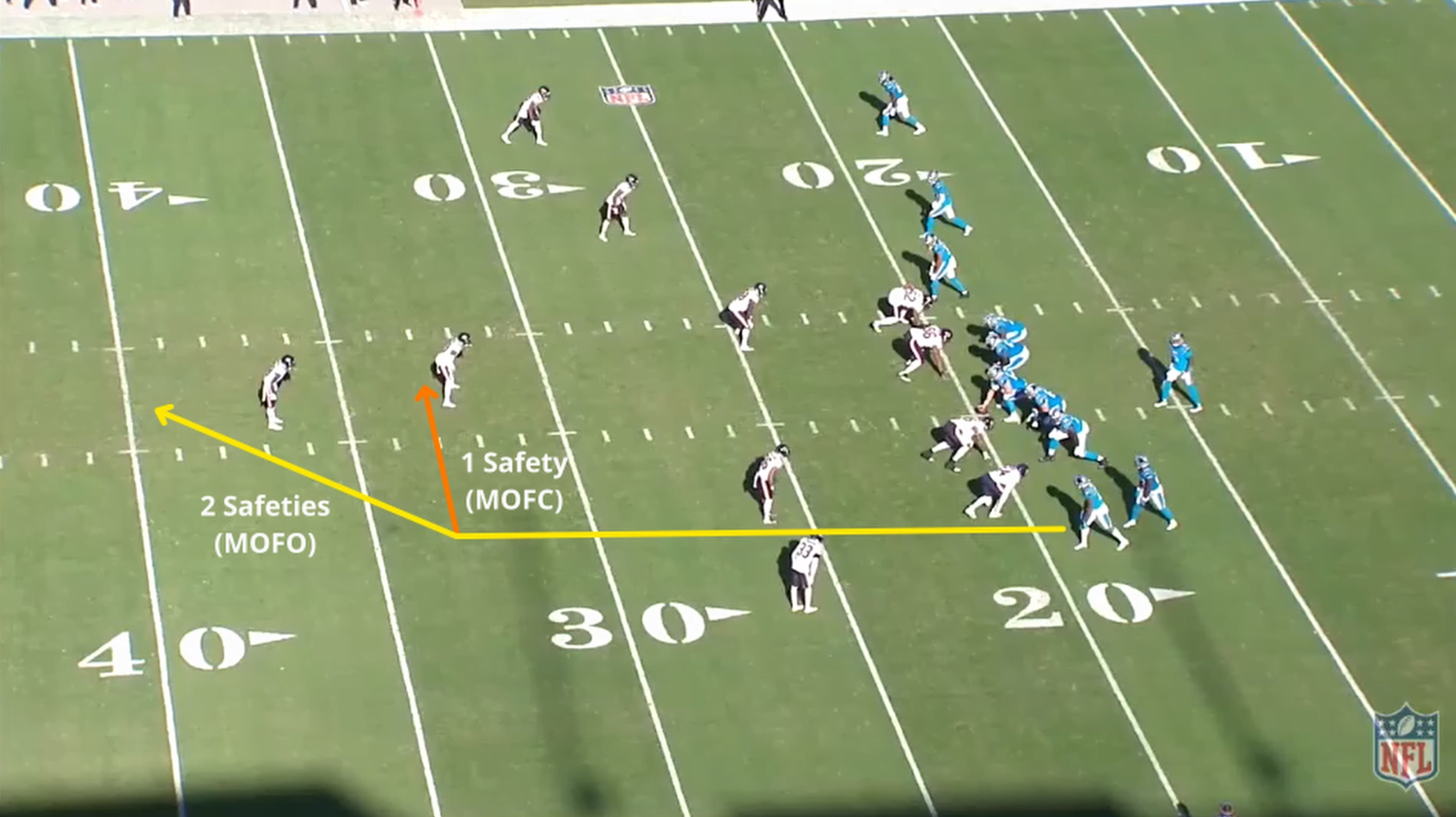

The Bears are sitting at 5-2 and are right in the mix of the NFC playoff picture. Their defense is getting to the quarterback, locking down receivers, and confusing quarterbacks into holding the ball and making mistakes. With the marriage of an elite secondary and a defensive line that can cause pressure, the Bears have all the pieces to the puzzle on defense. The offense might have its ups and downs but as the old saying goes and as Bears fans are hoping is true – defense win championships.
If you liked this post make sure to subscribe below and let us know what you think. If you feel like donating and want access to some early blog releases and exclusive breakdown content or to help us keep things running, you can visit our Patreon page here. Make sure to follow us on Instagram @weekly_spiral and twitter @weeklyspiral for updates when we post and release our podcasts. You can find the Weekly Spiral podcast on Spotify or anywhere you listen.
